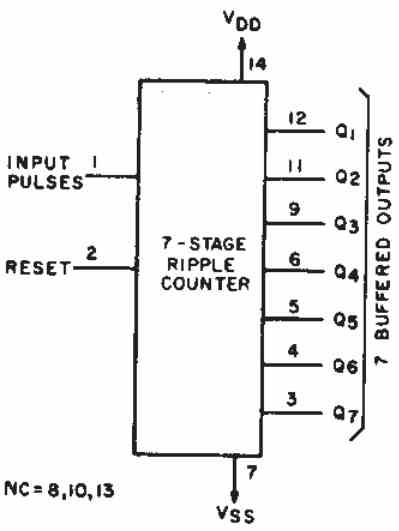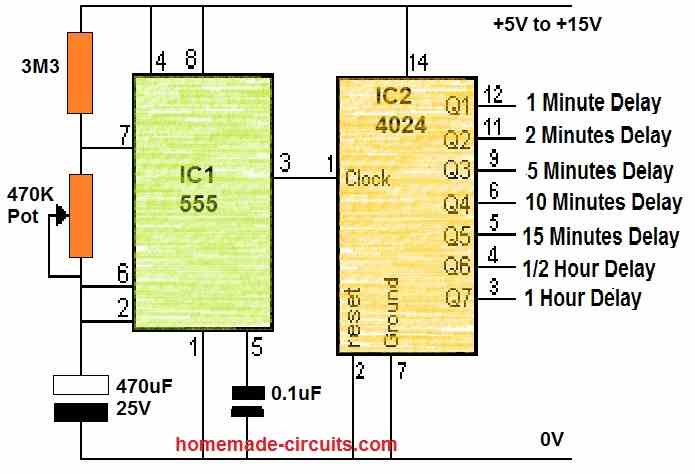IC 4024 is a 7-stage binary ripple counter with a divide-by-two section and a reset input. It is a CMOS integrated circuit and can operate at a wide range of supply voltages.
Here is a datasheet for the IC 4024:
General Description
The IC 4024 is a 14-stage binary ripple counter with a divide-by-two section and a reset input. It is designed for use in digital counting applications and features a wide supply voltage range and low power consumption.
Electrical Characteristics
- Supply voltage range: 3V to 18V
- Maximum clock frequency: 20 MHz
- Input capacitance: 5 pF
- Power supply current: 5 mA (max)
- Low output voltage: 0.5V (max)
- High output voltage: VDD - 0.5V (min)
Pin Configuration
The pinout configuration of the IC 4024 can be learned from the following explanation and the pinout diagram.

- Pin 1: Clock Input (CP)
- Pin 2: Reset Input (MR)
- Pin 3: Output 1 (Q7)
- Pin 4: Output 2 (Q6)
- Pin 5: Output 3 (Q3)
- Pin 6: Output 4 (Q5)
- Pin 7: Ground (Vss)
- Pin 8: Not Connected
- Pin 9: Output 5 (Q3)
- Pin 10: Not Connected
- Pin 11: Output 6 (Q2)
- Pin 12: Output 7 (Q1)
- Pin 13: Not Connected
- Pin 14: Positive Supply VDD
Functional Description
The IC 4024 is a 14-stage binary ripple counter. The counter increments on the rising edge of the clock input (CP). The divide-by-two section produces a half-frequency output on output 6 (Q6). The reset input (MR) resets the counter to zero when it is pulled low.
There are 7 outputs for the IC 4024. The outputs are Q1, Q2, Q3, Q4, Q5, Q6, Q7.
The number beside the Q indicates by what figure it divides the input pulses to produce a divided output.
Let's take the example of pin#3 which is a Q7 output.
Q7 means, it divides the input pulses at pin#1 by 27 = 128.
If, let's assume that the clock frequency at pin#1 is 512 Hz, then this 512 will be divided at the output pin#7 by 128. The result will be 512 / 128 = 4 Hz.
Therefore, if there's a 512 Hz frequency at pin#1 then pin#7 will divided it by 2 to generate a 4 Hz frequency.
The same applies for the other outputs. For example pin#4 which is Q6 will divide by 26 , pin#5 which is Q5 will divide by 25 ans so on.
Applications
The IC 4024 is commonly used in digital counting applications, such as frequency dividers, timers, and clocks.
One example application circuit can be seen in the following figure which can used to generate long duration delay timings from a IC 555 oscillator.

Package Type
The IC 4024 is available in a variety of package types, including DIP (Dual Inline Package) and SOP (Small Outline Package).
Manufacturer
The IC 4024 is manufactured by various semiconductor manufacturers, including Texas Instruments, STMicroelectronics, and NXP Semiconductors.
Thank you. Trying to find datasheet andt description was difficult.
Thanks for the 555 circuit diagram, seeing it “hooked up” gave me a far better understanding of the ice.
Thank you for the feedback, and glad you found the post helpful.